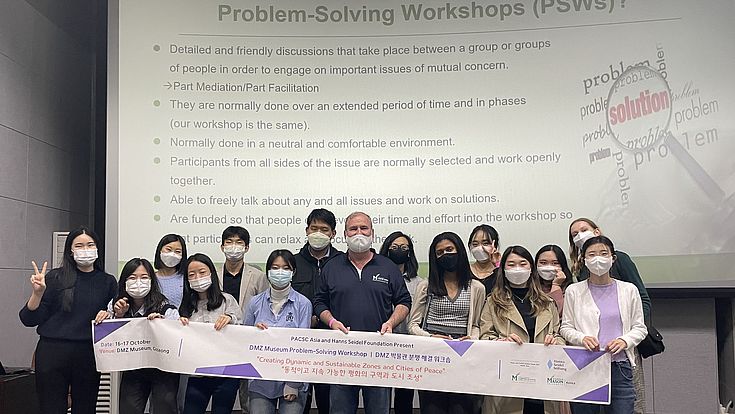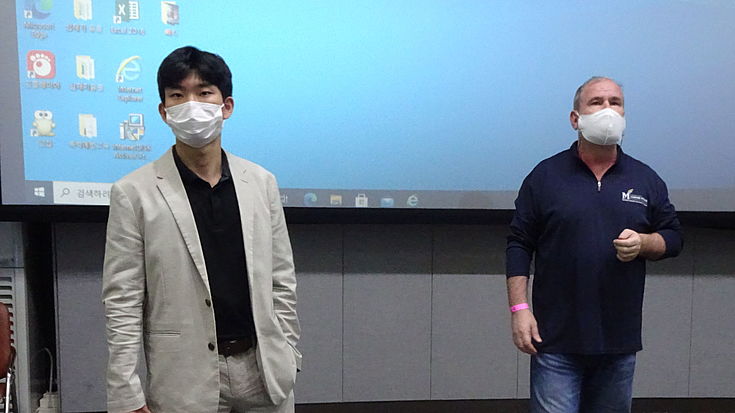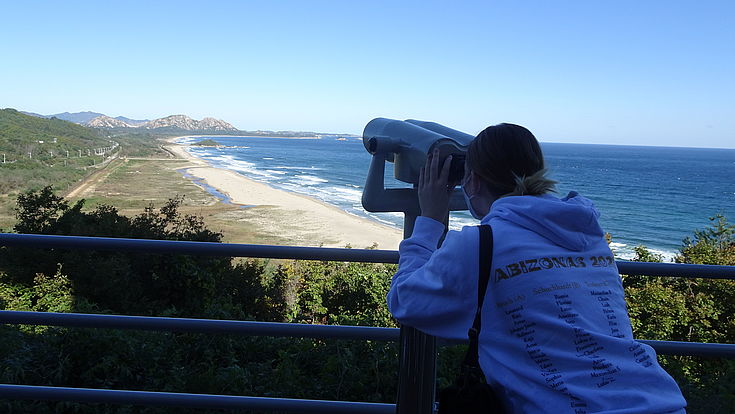Workshop
Workshop with PACSC Asia on Zones and Cities of Peace

In cooperation with the Peace and Conflict Studies Center (PACSC Asia) at George Mason University (GMU) in Korea, HSF Korea facilitated another workshop for a 13-member group of students and professors, this time staying in Goseong, located directly adjacent to the border line between South and North Korea. On site, the actual workshop titled "Creating Dynamic and Sustainable Zones and Cities of Peace" was held at the DMZ Museum itself. The following day, the Goseong Unification Observatory Tower and Hwajinpo History security & Exhibition Hall (Kim Il-Sung History Site) were also visited. YongJune Kim and Ariane Odendahl, researchers of HSF Korea, assisted with the overall management and organization for this collaborative event and participated as HSF representatives during the workshop.

Dr. Wilson, the director of PACSC Asia, started with introducing the concept of zones and cities of peace. The main topics discussed there were the method of a problem-solving workshop, writing dynamic but tangible definitions for zones and cities of peace, and establishing quantifiable characteristics of them. The DMZ Museum, which the workshop took place, was opened in 2009 in honor of people's hopes for the reunification of South and North Korea and is located in the northernmost area along the east coast near the civilian line of control and has exhibition halls with various themes highlighting the historical significance and meaning of the DMZ, from the aftermath of the war to its pristine ecosystem.

The participants visited the Goseong Unification Observatory Tower and Hwajinpo History Security & Exhibition Hall After the day when workshop was successfully finished. The Goseong Unification Observatory Tower is the oldest lookout point in Korea from which visitors can catch a glimpse of North Korea. It was established in 1984 and remains a symbol of Korean division to this day. Hwajinpo History security & Exhibition Hall (Kim Il-Sung History Site) was used as the summer residence of the former North Korean leader and his family from 1948 to 1950. However, the building itself was constructed as early as 1938 and is attributed to the German architect H. Weber, which explains its similarity to a German castle. Today, this building is also a symbol of the Korean division history and contains an exhibition on differences and rapprochement. All in all, the time spent together during 2 days of workshop was very well used for professional and personal exchange, for establishing contacts and for exploring the impressive surroundings together. A weekend that will be long and well remembered by all participants.
